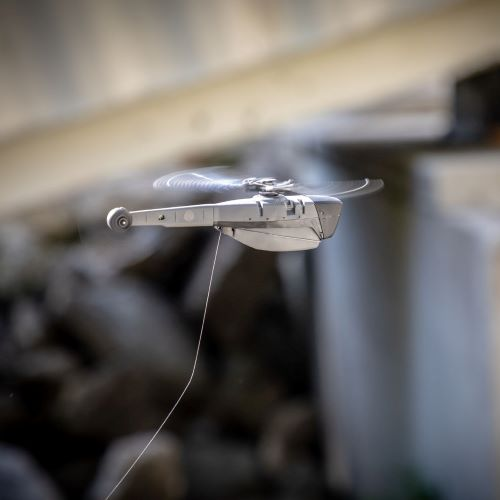Sep 4 2020
In the late 18th century, the French had a great idea of utilizing hydrogen balloons for military surveillance, and since then, aviation capability has played a crucial role in intelligence, surveillance, and reconnaissance (ISR) operations.
 Image Credit: University of South Australia.
Image Credit: University of South Australia.
At present, drones or unmanned aerial vehicles (UAVs) have become an important asset for ISR operations. Drones used in the Australian Army range from the small Black Hornet—which is roughly the size of a whiteboard marker—to bigger models that have broad-ranging surveillance abilities.
But in spite of their utility and ubiquity, all military UAVs are presently hampered by the same simple issue—that is, the sky changes color, but they never do.
The static color of drones can be a major problem, considering the huge significance to remain undetected during ISR operations. But a solution is now available, thanks to a research team from the Future Industries Institute (FII) of the University of South Australia.
In association with the Department of Defence, the FII team headed by Dr Kamil Zuber has created an array of lightweight polymer panels that are capable of changing color on demand.
These polymers are the so-called electrochromic materials, which means they are capable of changing color in response to an electric field, and the precise colors can be adjusted to particular voltages.
Similar technology has been used in luxury cars, for diming mirrors, and on the windows of the Boeing 787 Dreamliner. But those applications are slow, require high power consumption to switch, and the electric flow must be maintained to sustain the change state.
Dr Kamil Zuber, Department of Defence, Australia
Dr Kamil Zuber continued, “Our panels, on the other hand, have switching speeds in the range of seconds and offer color memory, which means they retain their switched color without a continuously applied voltage. They also operate in the range from –1.5 to +1.5 volts, which means you only need to use an AA battery to activate the change.”
Apart from their chameleon-like features, the polymer panels are low-cost, durable, and lightweight, and can be either flexible or rigid, rendering them perfect for use on drones of all specifications and sizes.
We have built a small-scale frame of a UAV and put our panels on it. We have demonstrated it against all sorts of different sky states and completed a range of validation testing showing how these materials can respond in actual use. We have five or six different materials, and each of the materials can produce two to three distinct different colors.
Dr Kamil Zuber, Department of Defence, Australia
At present, the technology is being improved to incorporate autonomous adjustment and self-awareness into the system, allowing drones to automatically change color in response to variations in the surrounding environment.
At this stage, we’ve been working mainly on the panels and the hardware, but during the latest stage of the project we’ve developed prototype electronics for the controller, which is something that could test the state of the sky and then automatically adjust the voltage to the panel to tune it to the right color.
Dr Kamil Zuber, Department of Defence, Australia
“So, if the UAV passed in front of a cloud, it would turn pale, then when it moved back into blue sky, it would turn back to blue,” Dr Zuber concluded.